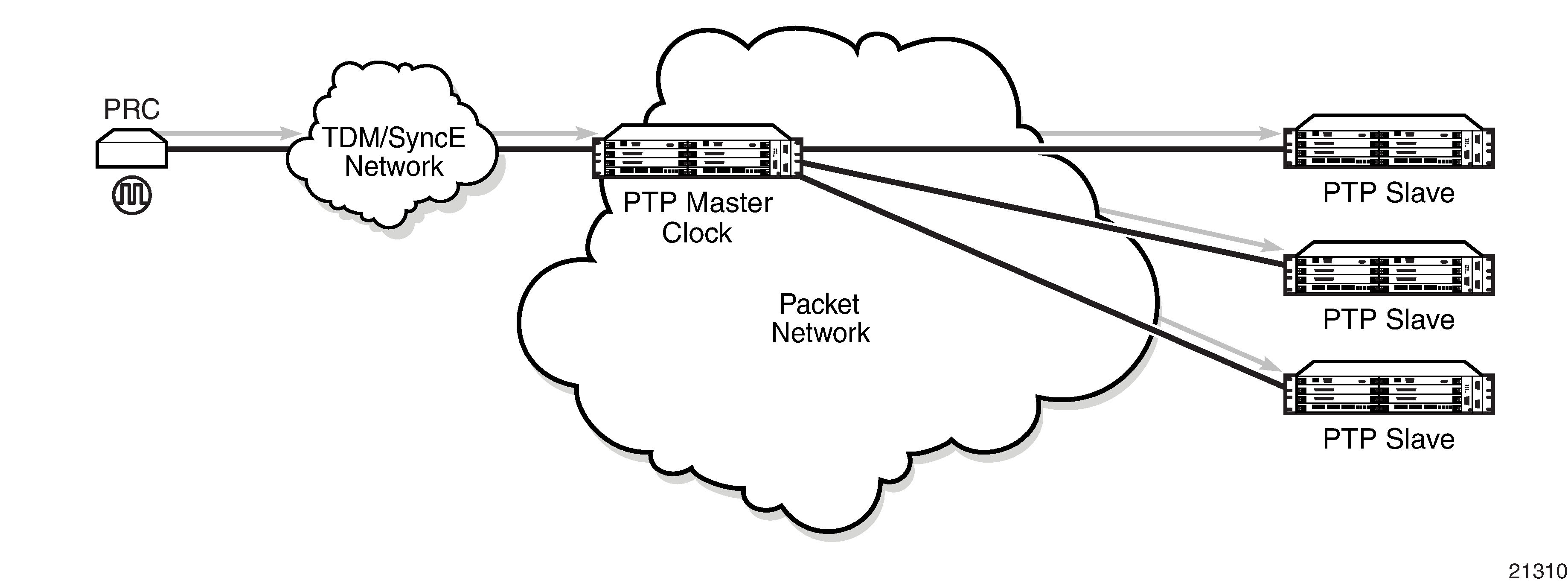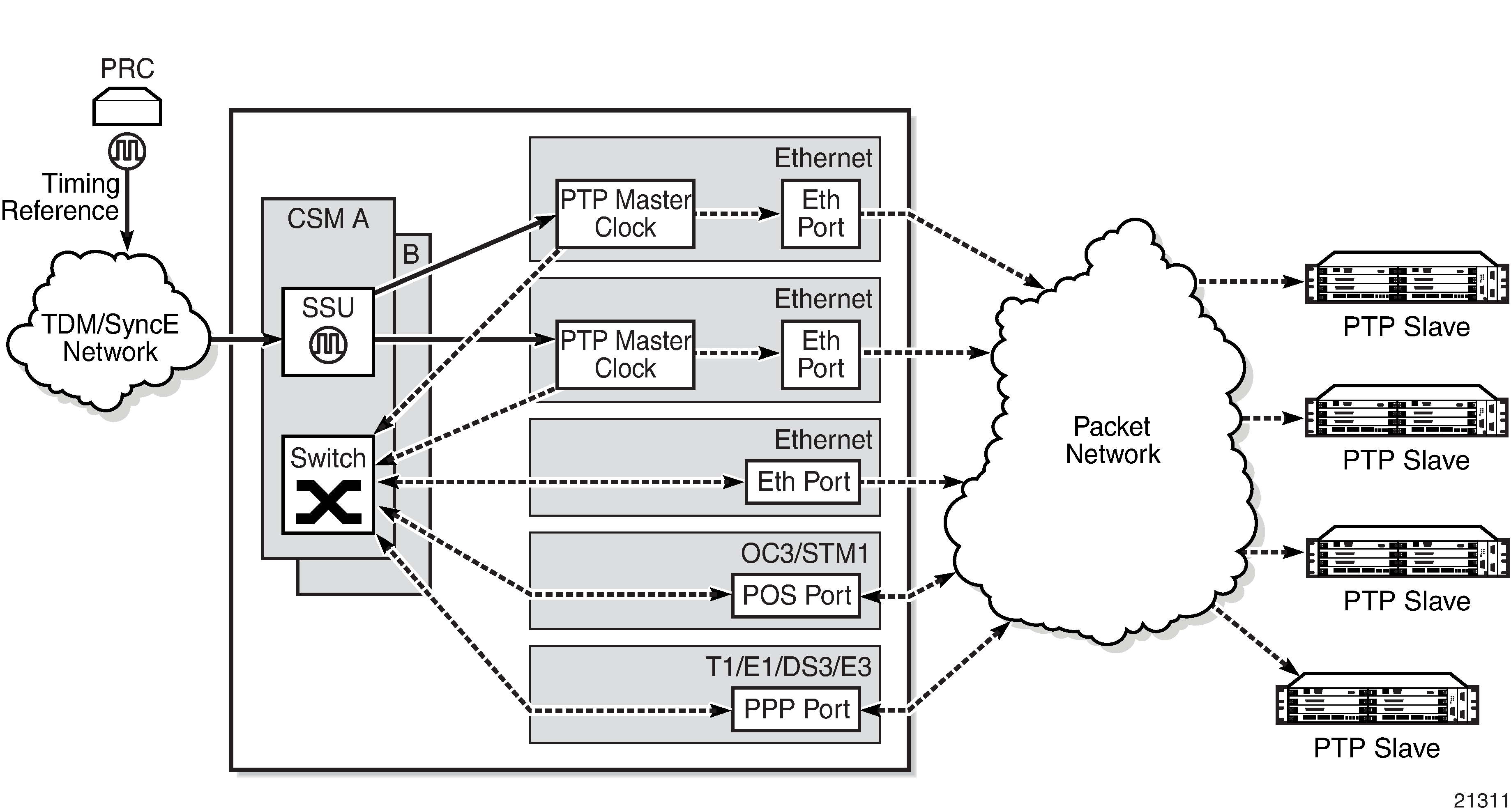The 7705 SAR supports the PTP ordinary clock in master mode. Normally, a 1588v2 grand master is used to support many slaves and boundary clocks in the network. In cases where only a small number of slaves and boundary clocks exist and only frequency is required, a PTP integrated master clock can greatly reduce hardware and management costs to implement PTP across the network. It also provides an opportunity to achieve better performance by placing a master clock deeper into the network, as close to the slave clocks as possible.
Figure: PTP Master Clock shows a PTP master clock network configuration.

The PTP master clock capability is implemented on the Ethernet ports of the platforms listed in Table: IEEE 1588v2 PTP Support per Fixed Platform and on the cards listed in Table: IEEE 1588v2 PTP Support per Card on the 7705 SAR-8 Shelf V2 and 7705 SAR-18 .
The 7705 SAR-8 Shelf V2 can support up to six master clocks and the 7705 SAR-18 can support up to eight master clocks. The fixed platforms listed in Table: IEEE 1588v2 PTP Support per Fixed Platform can each support one master clock.
Figure: Ordinary Master Clock Operation shows the operation of an ordinary PTP clock in master mode.

Each PTP master clock is configured for a specific slot where the card (see Table: IEEE 1588v2 PTP Support per Card on the 7705 SAR-8 Shelf V2 and 7705 SAR-18 ) or Ethernet port (see Table: IEEE 1588v2 PTP Support per Fixed Platform) performs the master function. On the 7705 SAR-M, 7705 SAR-H, 7705 SAR-Hc, 7705 SAR-A, 7705 SAR-Ax, and 7705 SAR-Wx, this slot is always 1/1. On the 7705 SAR-X, this slot is always either 1/2 or 1/3. When the 7705 SAR-M is receiving PTP packets on a 2-port 10GigE (Ethernet) module, its PTP clock continues to use slot 1/1. Each master is also associated with an IP interface on a specific port, adapter card, or loopback address for the router; however, the IP interface configured on a 2-port 10GigE (Ethernet) module cannot be associated with a master clock. All packets that ingress or egress through a port where the master is configured are routed to their destination via the best route as determined in the route table.
Each master clock can peer with up to 50 slaves or boundary clocks. The IP addresses of these peers can be statically configured via CLI or dynamically accepted via PTP signaling messages. A statically configured peer may displace a dynamic peer on a particular PTP port. If there are fewer than 50 peers, then that dynamic peer can signal back and be granted a different PTP-port instance.